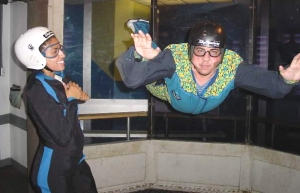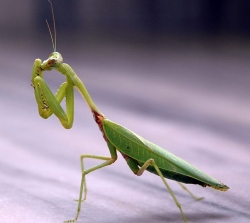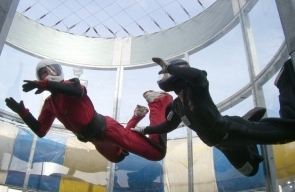
National
Skydiving
League
226 Pecan Street
Deland FL 32724
tel: (386) 801-0804
© 2003 - 2025
All Rights Reserved


226 Pecan Street
Deland FL 32724
tel: (386) 801-0804
© 2003 - 2025
All Rights Reserved


"People continue to ask me why flying the Mantis is superior to the boxman position. I hope the piece below helps you understand the difference in the two positions. I encourage you to contact me with any and all questions you may have regarding 4-way or building a team."

All flying maneuvers are built around a skydiver's chosen body position. It is this foundation, whether made of steel or sand, upon which every move is built. We all have personal experiences with the effects of poor body position - reach out for a grip and backslide, reach down for a grip and flip into the center of the formation. We did not like the results, but we're unable to prevent them because we failed to understand that bad things happen when your body position is one that provides a limited range of motion, forcing you to break out of 'neutral' with each move you make. The results are predictable - you find yourself somewhere you don't want to be.
There is more than one body position that allows a skydiver to fall straight down, maintain stability, and turn in place. The body position typically taught to AFF students can produce all of these things, as well, the 'Boxman' body position can. The real issue and what we are all interested in knowing is: "What is the best body position and why?"

- Range of Motion
- The Ability to Replicate Your Moves
Range of Motion refers to your ability to move in any direction and to pick up and present grips without material interference to your ability to maintain stability and control. Replication of Your Moves is exactly what it sounds like - the ability to duplicate a successful move again, again and again. This is important!!! There might be a better way to turn or side slide, but what we are teaching is a body position that will allow you to replicate with consistency. We have all seen the person who can turn fast, but can they do it in place 9 out of 10 times? With this course of instruction, this can become reality.
When we think of body position in a general sense, it is important to understand that any neutral body position (whether AFF, Boxman, Mantis or any variation thereof) is simply the product of (a) arm placement, (b) the degree of arch through your hips, and (c) leg extension.

- Arms in front of your head at a 45 degree angle (Holding the Ball)
- Head held up
- A slight arch through the hips with your legs extended only slightly past 90 degrees

The following chart illustrates where several body positions fall on the spectrum between a hard/maximum arch and minimum arch. At one end of the spectrum you find the hard/maximum arch, which is characterized as super-stability and Range only in one direction. Just down the spectrum you find the typical AFF body position. The AFF body position is very stable (which is why it is successful for AFF students) but provides a limited Range. Go a little further along the spectrum past the Boxman and to the Mantis, you lose some stability, but gain a large amount of Range and Replication. The Mantis is the point on the spectrum that simultaneously maximizes both Range and Replication.
As you continue moving across the spectrum to the Style Tuck, stability will continue o decrease rapidly as will both Range and Replication. But as with the AFF position, the body position serves a purpose. The Style Tuck is intended to produce only turns and flips, and a stylist has no contact with others throughout their event. As you move from the Style Tuck to minimum arch, you quickly lose remaining stability as well Range and Replication diminishes - one slight move and you are wildly out of control and flipping on your back.